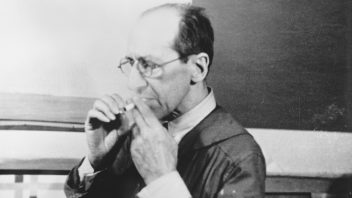Medieval annotations in the spotlight
Medieval readers and writers liked to use the margins of their books: we find their thoughts, summaries, opinions, complaints and jokes. Using four themes and fourteen portraits of medieval books, the online exhibition, The Art of Reasoning in Medieval Manuscripts, tells the story of their readers. Never before, have you experienced such a close encounter with (virtual) parchment!
In the current grand narrative of the intellectual history of the Middle Ages, scholars only started to question received knowledge and think critically in the twelfth century, when the age of scholasticism created a new intellectual climate and universities were born. Yet the tools for thinking critically and challenging authorities have always been part of the intellectual world of the Middle Ages (and before). Mariken Teeuwen, Irene van Renswoude en Irene O’Daly argue that this misunderstanding is not only caused by lingering prejudices about the ‘Dark Ages’, but also by the hidden nature of the evidence. Whereas the tools of scientific argumentation of the twelfth and thirteenth centuries manifested themselves in the production of texts and new textual genres (sententiae, disputationes), in earlier ages they often took the shape of paratexts: commentaries, marginal annotations, diagrams.

It is only in the last years that these paratexts have become visible to a larger audience of researchers. Before 2000, they were largely hidden in manuscript margins, now many of them are on free display in hundreds of online collections of digitized manuscripts, ready, for the first time, to be explored. From late Antiquity to the late Middle Ages, these voices in the margin are testimonies to a critical and scientific way of dealing with texts: versions are compared, passages that seem to be corrupt are marked, contrasting opinions are highlighted, confronted and discussed. In other words: the annotations offer a perspective on the intellectual culture of the Middle Ages that is much richer than previously assumed. And the online exhibition The Art of Reasoning in Medieval Manuscripts lets you experience that up close.




